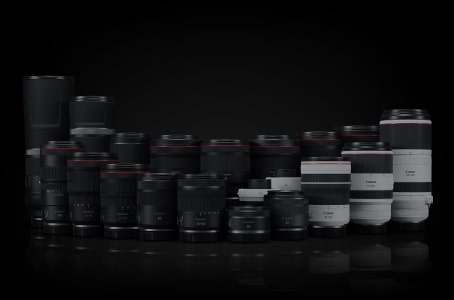The Advantages of RF Lenses

Optical designs once believed to be impossible are now realized in each and every lens. A control ring has been added, to help RF lenses advance into a new era of high-quality imaging.

RF28-70mm F2 L USM
Unprecedented Image Quality
— Large Aperture Mount with Short Back Focus
The RF-mount system employs the same large 54mm aperture used in the EF mount, though the camera itself is smaller. The new design also features a short back focus. The CMOS sensor is placed very close to the rearmost lens, increasing the degree of freedom in optical design. This new mount design enabled the development of the RF28-70mm F2 L USM zoom lens with a maximum aperture of f/2, as well as the RF50mm F1.2 L USM, which provides extremely sharp focus at the widest aperture. These features could not have been matched, in practical terms, using the EF mount design.
Upgraded Communication System in the Mount Enhances Cooperation Between the Camera and Lens.
The number of electronic contacts in the mount connection has been increased, from eight in the EF mount to 12 for the RF mount. This greatly improves the communication system, and thus the communication speed of RF lenses, while enhancing the synergy between the camera and lens. This improves operability and imaging expression, not to mention image stabilization performance.
Control Ring Offers Smoother, Comfortable Operation
A feature unique to the R-System, the control ring allows the user to flexibly customize operations to suit their shooting style and preferences. The ring can be configured to control aperture, shutter speed, ISO sensitivity or exposure compensation.
Built-in Digital Lens Optimizer
[Optical Compensation Achieved Immediately After Shooting]
Digital Lens Optimizer is a function that restores the original resolution of a photograph by properly correcting the aberration and diffraction that varies from lens to lens. High-capacity, high-speed communication between the lens and camera instantly transmits data for the Digital Lens Optimizer in the RF lens to the camera. This allows the user to perform aberration and diffraction processing while shooting.

Dual Sensing IS / Combination IS
[New lens mount communication system realizes high-precision image stabilization]
When shooting still pictures, the Dual Sensing IS function works to detect the amount of camera shake based on image information from both the CMOS sensor in the camera, and the motion sensor(s) in the lens. This helps it compensate for camera shake even more effectively. The system accurately detects and compensates for camera shake that cannot be detected by the in-lens IS alone, achieving a camera-shake blur correction as effective as an increase of up to 5 stops* in shutter speed.
Dual Sensing IS (shooting photos)
* According to CIPA standard. When shooting photos. Compatible lenses: RF15-35mm F2.8 L IS USM / RF24-70mm F2.8 L IS USM / RF70-200mm F2.8 L IS USM / RF24-240mm F4-6.3 IS USM / RF24-105mm F4 L IS USM / RF35mm F1.8 MACRO IS STM (as of October 2019).







